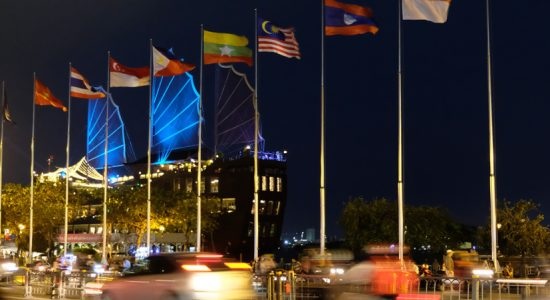
(Photo : ASEAN)
ASEAN summit
- ASEAN leaders convened in Vientiane, Laos, focusing on "Enhancing Connectivity and Resilience" across the Southeast Asian region.
- The meeting adopted 13 reports reflecting efforts to enhance regional connectivity and resilience, and discussed Timor-Leste's potential ASEAN membership.
- This move towards regional integration is part of a broader trend of multilateral peacebuilding and conflict prevention, adapting to global challenges.
- The meeting is a testament to ASEAN's efforts to adapt to the changing global landscape and work towards a more integrated and resilient future.
In a significant move towards regional integration, leaders of the Association of Southeast Asian Nations (ASEAN) convened in Vientiane, the capital of Laos. The meeting, held on October 9, was the 35th ASEAN Coordinating Council meeting. The theme of the meeting was Enhancing Connectivity and Resilience, with the aim of transforming ASEAN into a more connected and resilient community. This goal was reflected in the 13 reports adopted across the three ASEAN Community pillars.
These reports included the secretary-general of ASEAN's report on the functions and operations of the ASEAN Secretariat, the Committee of Permanent Representatives to ASEAN's report, the ASEAN Integration Task Force's report, the ASEAN Connectivity Coordinating Committee's report, and the 2024 Annual Progress Report of the ASEAN Smart Cities Network.
These reports are a testament to ASEAN's ongoing efforts to enhance regional connectivity and resilience, which were key themes of the meeting.
The meeting also reviewed and approved documents to be presented at the 44th and 45th ASEAN Summits. Furthermore, the meeting discussed the legal instruments required for Timor-Leste to join various ASEAN frameworks, marking an important step in expanding ASEAN's membership.
The Broader Trend of Multilateral Peacebuilding and Conflict Prevention
This move towards regional integration is part of a broader trend of multilateral peacebuilding and conflict prevention. The multilateral system, which consists of rules, norms, and institutions that constitute the world's governance architecture, is constantly evolving. This system is periodically reconstituted by upheavals, usually during or after a global crisis.
The current multilateral system, created in the first decade after World War II and reshaped after the end of the Cold War, is now facing such a period because it bears little resemblance to the world that existed when it was created.
Today's challenges include rising geopolitical tensions among nuclear-armed major powers, a seemingly inevitable climate catastrophe, technological changes that have the potential to remake every aspect of life, and the increasing powers and capabilities of non-state actors to reshape sub-national, national, and international affairs. These drivers have altered and continue to alter the dynamics of armed conflicts around the world.
The ASEAN meeting in Vientiane is a clear example of how regional bodies are adapting to these changes. By focusing on regional integration and resilience, ASEAN is positioning itself to better respond to these challenges. The adoption of key reports and the discussion of Timor-Leste's membership in ASEAN are steps towards a more connected and resilient community.
Regional Integration Reflected in Ongoing Discussions
This move towards regional integration is also reflected in the ongoing discussions about the reform of the UN Security Council. The permanent members have stymied progress, with each determined to maintain its permanent seat and veto. However, there is a growing recognition that the council needs to be more representative and responsive to the changing global landscape.
In the Bay of Bengal region, for example, the Bay of Bengal Initiative for Multi-Sectoral Technical and Economic Cooperation (BIMSTEC) has been working towards regional economic cooperation. Despite some setbacks, the littorals are starting to renew their commitment to the grouping, which coincides with the resurgence of interest in the BoB region itself amongst various stakeholders.









